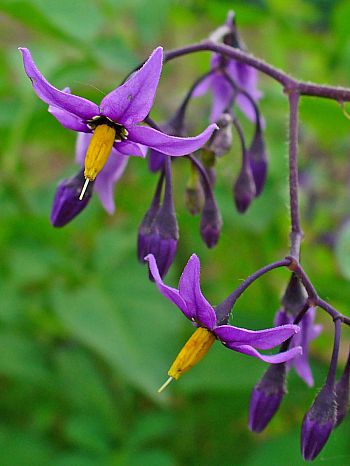Walk on the wild side
On any count, July was an exceptionally good month weather-wise and reports from beyond campus are of a fine harvest within the National Park.
 David Harper (LifeSci)
David Harper (LifeSci)
 David Streeter (LifeSci)
David Streeter (LifeSci)
We were interested to see to what extent this was mirrored in the fruit crop on campus. The mature beech trees along the southern boundary are laden with nuts indicating what, in forest terms, would be called a ‘good mast year’. ‘Mast’ is the general term used to describe the hard fruits of forest trees, such as acorns, and was originally applied particularly to those on which animals fed in winter.
Conspicuous in the shrubberies are the scarlet fruits of Spindle, looking like miniature cardinals’ hats. These are particularly attractive to birds and were deliberately planted with this in mind. When found growing naturally in hedgerows they are a good indication that the hedge might be an old one. It looks as if our autumn bird flocks will be well-provided for.
The shrubberies at this end of the summer also acquire a number of tall, conspicuous and characteristic wild flowers.
Prominent among these is Bristly Oxtongue, Picris echioides, a tall, yellow composite, with flower heads that look like dandelions but aren’t. As its English name suggests, it is covered with stiff bristly hairs and the bracts beneath the flower-heads are broad and leaf-like. It is one of the plants that we described last month as an archeophyte - that is that, although not native, it has been here long enough to be treated as an indigenous member of our flora. It is essentially a southern European species and in this country is widespread south and east of a line from the Wash to the Severn.
Growing among the Oxtongue we noticed a rather inconspicuous plant with small heads of flowers – clearly another composite. The stem was clothed with narrow leaves and it had a much-branched inflorescence. A closer examination revealed it to be Guernsey Fleabane, Conyza sumatrensis, a much more recent addition to our flora and originating from South America. It first appeared in Guernsey in 1961 (hence its rather inappropriate English name), and is now spreading rapidly in southern England. It is not an ‘archaeophyte’ but a ‘neophyte’!
We’ve also created a number of small artificial shingle beaches along the side of several of the buildings on campus, which provide a happy hunting ground for the more botanically minded at this time of year.
 Solanum dulcamara. Photo: H. Zell
Solanum dulcamara. Photo: H. Zell
For example, that bordering the Medical School has a vigorous clump of Woody Nightshade or Bittersweet, Solanum dulcamara. Often confused with Deadly Nightshade, it is a characteristic plant of undisturbed shingle beaches. Its attractive purple flowers are similar to those of a potato, which belongs to the same genus, and it has red berries that - like other members of the nightshade family - contain the poisonous alkaloid solanine, so they are to be avoided!
